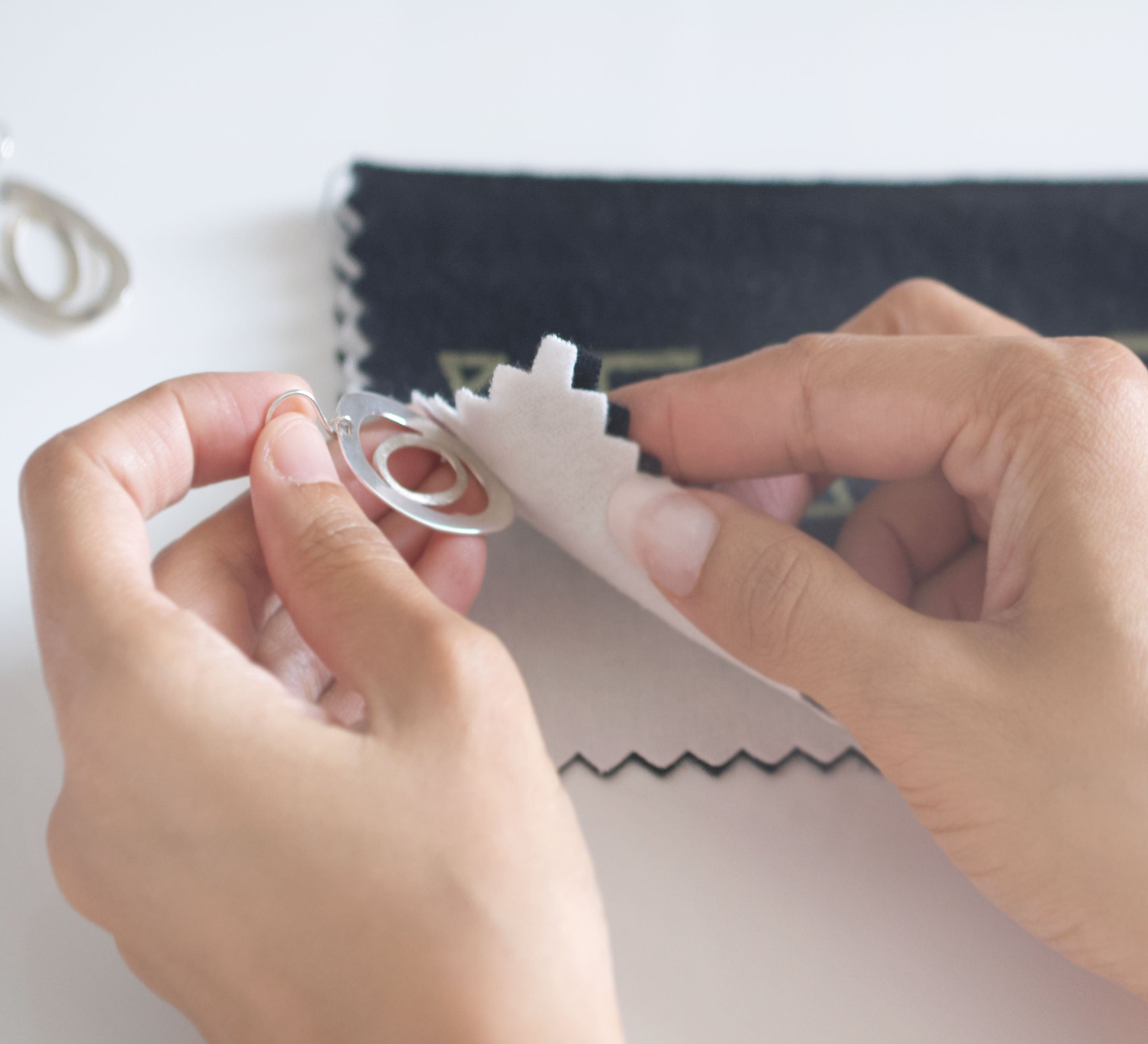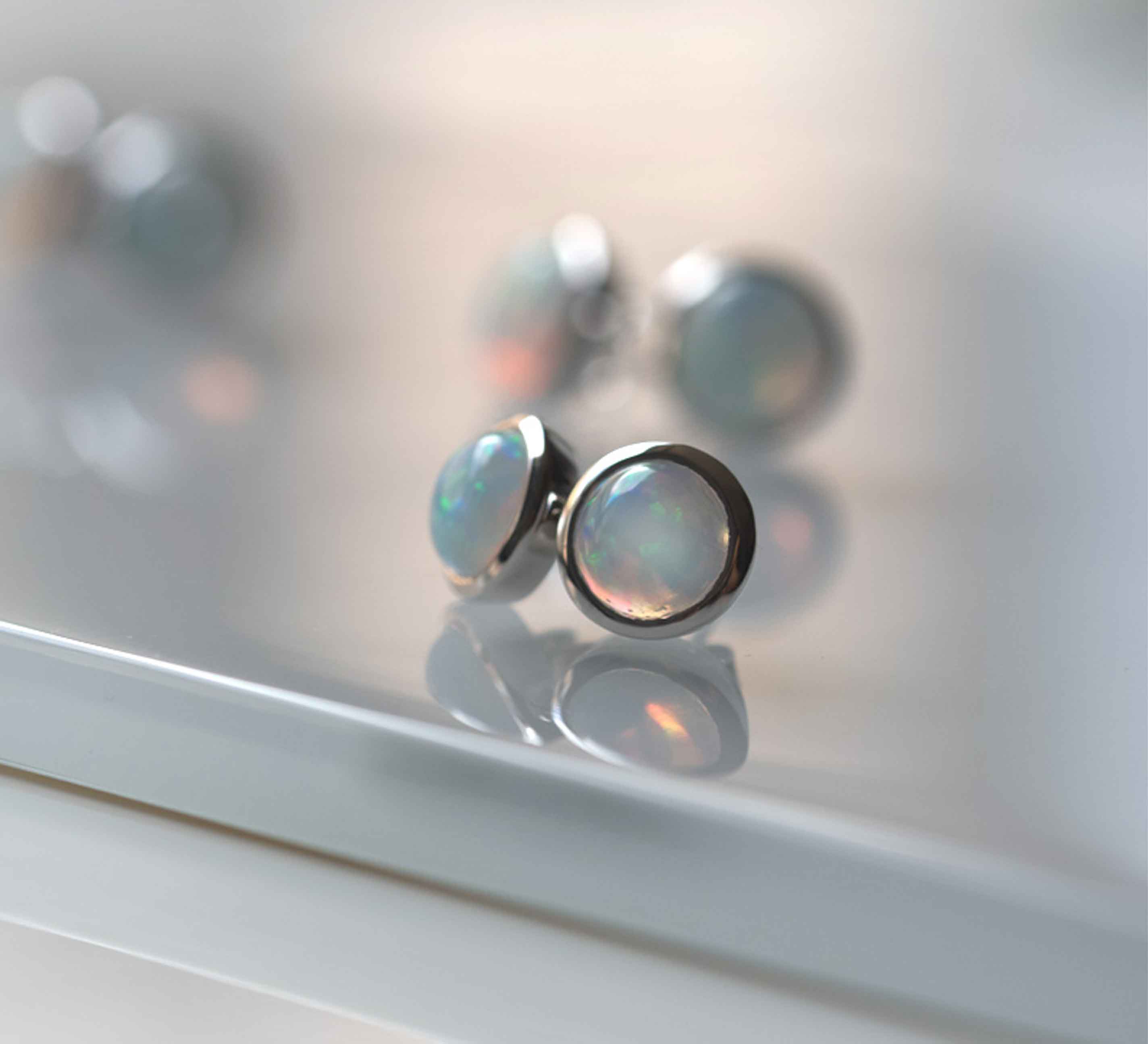
What Causes Silver to Tarnish and How to Clean Tarnished Jewelry
This is one of the most comprehensive guides and an in-depth study on how tarnishing occurs in jewelry, how to remove tarnish, and preserve your precious silver jewelry from future tarnishing. It is important to first understand how does tarnishing take place so you can prevent it in the future by following the simple steps.
HOW DOES SILVER TARNISH?
Over the time your silver jewelry will start to change color, first with a very slight yellowish tinge, which might change into light purple before turning black. This process is called tarnishing. Thankfully, it is very easy to remove tarnish from silver and bringing it back to its original white luster. Sometimes the initial yellow tarnish can be removed by simply washing your jewelry gently with soap and water.
WHAT CAUSES SILVER TO TARNISH?
- Tarnish is caused by a number of chemicals that will react with silver, and by far the most common culprit is sulfur, which is present in many forms around us every day. Hydrogen Sulfide (H2S) and Sulfur Dioxide (SO2) exists in the air particles around us, especially in urban or industrial areas. Hydrogen Sulfide, which is known for its "rotting egg" odor reacts with silver to form silver sulfide, the substance that tarnish is made of. Even when hydrogen sulfide is in low concentrations, the chemical reaction can occur. This is the reason why jewelry professionals always insist on slightly cleaning ur jewelry from time to time or using the silver polishing cloth that your jewelry comes with. Bore-water can be very high in sulfates or sulfides. Many day-to-day items such as soaps, facial cleanser, shampoos, perfumes and foods such as onions and eggs, also contain sulfur compounds. So, if you wash your jewelry in sulfur-rich water or use skin products made with sulfur can all lead to the quick tarnishing of silver. Even eating foods high in sulfur may cause silver to blacken, as sulfur is secreted through your skin during perspiration.
- The presence of moisture in the air will also accelerate tarnishing in silver. The higher the level of humidity, the faster the rate of tarnish. SILVER WILL NOT TARNISH IN DRY AIR. This is the reason why keeping a silica gel or few pieces of chalk where you store your jewelry is highly recommended as it absorbs moisture from the air and keeps the area dry.
- Another common chemical that will react with silver is chlorine. Pool water, the air around an indoor or outdoor pool, bleaches and fabrics washed with bleach all contain traces of chlorine in small amounts, which will react with silver to produce a black layer of silver chloride.
- Sterling silver is usually 92.5% pure silver and 7.5% copper. Copper reacts with oxygen to form the red copper oxide. This may also tarnish the surface of your silver.
- Various acids will also cause silver to tarnish. People often report that when their silver is wrapped in tissue it quickly blackens. This is because tissue paper often contains acids.
- Acidity levels of a person's skin can also cause tarnish. Some people report silver blackening on them overnight, whereas others can wear it for years without a reaction. Different skin PH levels will result in different rates of tarnish.
In a nutshell, there are many things in daily life that can cause your silver to tarnish, and the speed at which it tarnishes will vary depending on the specific conditions: the sulfur content of the water in your area, the amount of industrial pollution, the chemicals you’re exposed to at home or work, including detergents, shampoos, and soaps, some skin cleansers, foods, and the list goes on. 
HOW TO CLEAN TARNISHED JEWELRY?
Good news, it is very easy to remove tarnish from silver but one must be careful with the stone that is set in your silver jewelry as it can break while trying to remove tarnish from silver.
WEAR IT REGULARLY
One of the best ways to prevent sterling silver jewelry from tarnishing is by wearing it on a regular basis. Natural oils in your skin can actually help to keep the jewelry clean and maintain its brilliance.
SILVER POLISHING CLOTHS
Polishing cloths are the easiest and the most efficient way to prevent and remove tarnish from silver jewelry. The simplest method is to use a microfiber silver polishing cloth, available from most jewelers or jeweler supply shops. These are usually infused with a silver-polishing compound and are a must for any silver jewelry owner. Simply rub the silver surface with the cloth by hand to remove the layer of tarnish and bring the jewelry back to its original shine – you’ll notice that the cloth itself will be covered with black residue – this is the tarnish you’ve just removed from the silver. This method is very good for maintaining clean silver that has a high polished smooth surface but may be hard work for heavily tarnished pieces. If the silver is somehow textured, it won’t be able to remove all of the tarnish. Brushed silver, for example, has many tiny grooves, which are inaccessible to a cloth
CHEMICAL CLEANERS
An alternative is to use silver polish paste or liquid. You can find them at the detergent aisle in your grocery store, Tarn-X and Wright's Silver Cream Polish are safe to use and works well on jewelry. The paste is rubbed on the silver piece, or the silver item is immersed in the liquid. The drawback of this method is that it is a bit messy, and can potentially expose you to unpleasant chemicals. Also, very important to keep them away from children.
IONIC CLEANERS
A very effective and safe method is to use an ionic cleaner, which uses the process of electrolysis. Some jeweler supply shops carry these electrolysis kits specifically for the purpose of cleaning silver. Two electrodes, one with a silverpoint on it and the other with a stainless steel one, are attached to a battery pack and immersed in a solution of pure water mixed with an electrolyte powder, along with the item to be cleaned. Within seconds, traces of tarnish disappear. (Note that with jewelry that has an intentionally oxidized or painted black surface, immersing for too long will remove all traces of black). After cleaning, rinse in water. We recommend finishing off this process by rinsing your jewelry piece in a bowl of warm water and alcohol. This will cause the water to bead, and your jewelry piece will dry almost immediately.
HOME-MADE DIY METHOD
If you want to try something homemade, line the bottom of a clean glass or plastic container with aluminum foil. Combine hot water with 2 teaspoons of baking soda and 1 teaspoon of salt and add to the container. Immerse your jewelry, making sure that it’s in contact with the foil. An electrolytic chemical reaction will occur, transferring the tarnish from your jewelry to the foil (Beware with stones in boiling hot water. Some may crack!).
HOW TO PREVENT JEWELRY FROM TARNISHING
Though it may be impossible to totally prevent the natural occurrence of tarnish, there are things you can do to slow down the process considerably.
- Put your jewelry on, only after applying perfume, deodorant, aftershave or cologne – not before. Avoid wearing silver when swimming, as chlorine and seawater will both react with it. Avoid exposure to household or industrial cleaning chemicals when possible.
- When removing your silver jewelry, ensure it is dry and wipe with a silver polishing cloth.
- Store your jewelry wrapped in a cloth or in a sealed plastic bag of a good quality and keep in a dry place – the bathroom is not a suitable storage environment. Jewelry tarnishes faster when kept in humid places.
- In jewelry boxes or cabinets, you can use silica gel to remove excess moisture.
- Be aware that jewelry in cabinets that are in direct sunlight will usually tarnish faster because heat speeds up the chemical reaction.
- Don’t wrap your stored jewelry in tissue paper or in contact with rubber, unless you can confirm these are acid-free.
- If you believe your jewelry requires some cleaning before storage, you can wash it in a mixture of warm water (not hot) and a gentle detergent (phosphate free), using a soft cloth or a brush with soft bristles. Dishwashing liquid is suitable, but NOT for pearls and certain gemstones! Ensure that you use a soft, non-abrasive cloth or brush, as silver is a soft metal and prone to scratching. With purposefully oxidized surfaces, be mindful of not brushing out the black oxidation.
- Make it a habit of ensuring that your silver jewelry is always dry before storing it. If unsure, simply swipe the polishing cloth before putting it away that ways it will take off any dust or chemicals set on it that are hard to notice.
- Never keep two different metals in one box. Store your brass, copper or any other costume jewelry separate from your silver or fine jewelry.
- Above all, monitor your silver jewelry, and be prepared to regularly polish or clean it with any or a combination of the methods described above. With little care, you can enjoy your precious silver jewelry for many years.
Do you have any other tips to add to our list? Please comment below!
If you have any questions regarding your jewelry from Veatge, send us an email at hello@veatge.com. We always go above and beyond when it comes to taking care of our loyal customers and help them out with any issues they have with their jewelry.
CLICK HERE to browse some of our most popular sterling silver and 18k gold vermeil jewelry



4 comments
@Annie Lindsay no the tarnish is an oxide layer on the outside of the silver that’s formed as a reaction between hydrogen and silver.
Will
After my silver rings are tarnished, I put them back on and they go right back to silver, without cleaning them.
Teri
When you remove tarnish either with a cloth or Tarn-x are you removing sterling silver? Put another way is tarnish made from sterling silver?
Annie Lindsay
Will cleaning tarnished silver harm turquoise or jewels?
Eve Pittman
Leave a comment
This site is protected by hCaptcha and the hCaptcha Privacy Policy and Terms of Service apply.